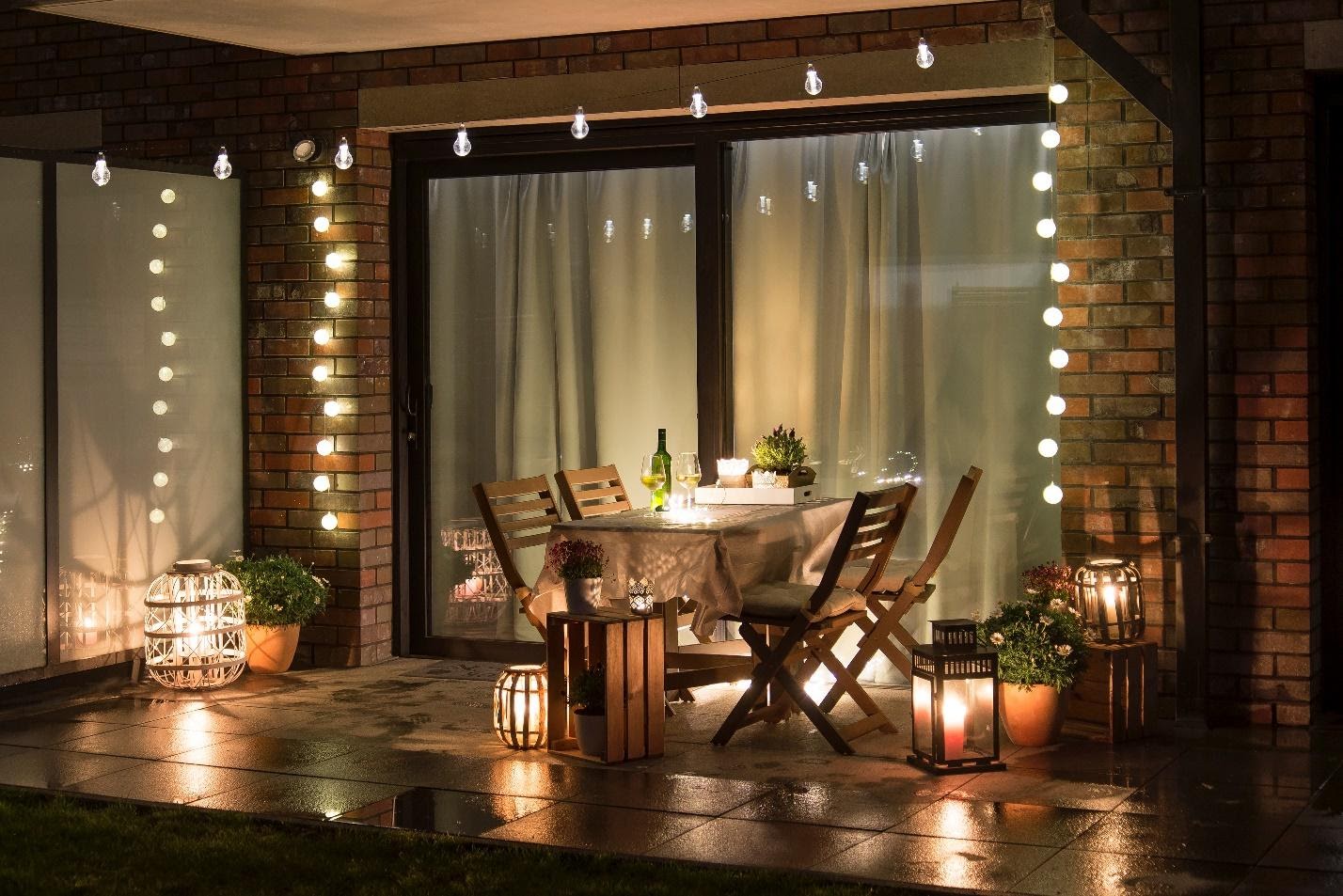Incandescent vs. LED Light Bulbs: What is the Difference?

You probably don’t think much about your light bulbs until you have to change them. With that said, it’s well worth your time figuring out what kind of bulbs power your lamps, task lighting, and other sources of luminescence in your home. After all, the quality of light makes a huge difference in how you see the world around you. We all know that feeling of “oh-no-do-I-really-look-like-that?” when you look at your reflection in a harshly lit mirror.
It’s important to choose the right kind of lighting for your home because it can impact many other aspects of your household. In the match-up between incandescent vs LED light bulbs, there are distinct pros and cons of each. After all, you don’t want to buy all new light bulbs only to realize they’re using way too much power and bumping up your electricity bill or constantly burning out.
Curious about which kinds of light bulbs have the potential to lower your utility bill and deliver beautiful interior and exterior lighting? We’ll explore a comparison between the different types of residential light bulbs you’ll see and examine which type might be right for you.
What are the different types of bulbs you can buy?
You’ll have quite a few choices when it comes to lighting your home. Although light bulbs seem simple in nature, it took Thomas Edison and his team 3,000 tries to get it right. While Edison didn’t come up with the concept for the light bulb, he did make significant improvements to those older ideas, which resulted in the first practical incandescent light bulb that could stay lit for more than a few hours.
It was in November 1879 when Edison finally invented his electric lamp with a carbon filament. It took years of tireless work and experimentation until patent number 224,898 was given for Edison’s electric lamp.
These days, consumers have many options beyond Edison’s incandescent bulb. Here are some of the main types of bulbs you’ll see in home improvement stores.
Compact fluorescent bulbs (CFLs):
CFL bulbs are glass tubes filled with both gas and mercury. The amount of mercury is incredibly tiny, only about 4-5 milligrams.
CFL bulbs create light when the mercury particles in the bulb start to get excited by the electricity running between two electrodes at the base. The mercury sends out an invisible ultraviolet light that becomes visible when it hits the white coating inside the CFL bulb.
These types of bulbs typically take a long time to warm up, may have limited color options, and don’t dim as smoothly as other types of bulbs. Plus, using the dimming feature on these bulbs reduces their overall lifespan.
LED bulbs:
LEDs, aka light-emitting diodes, work by directly converting electrical energy into light. Traditional light bulbs first convert electrical energy into heat, then heat into light. LEDs, on the other hand, are much more efficient, as most of the electrical energy they use is converted directly into light instead of heat radiation. In fact, LEDs produce light around 90% more efficiently than incandescent light bulbs.
This type of lighting can be incorporated into traditional bulbs as well as fixtures so that they mimic other more traditional lighting choices. They’re flexible and have a wider application range than other bulb types. They’re also useful for situations and spaces where you need decorative lighting like fairy lights.
LEDs use special heat sinks to absorb any heat created, and dissipate the heat into the surrounding environment. This makes LEDs a relatively safe choice for home lighting.
Incandescent bulbs:
Incandescent bulbs work by conducting an electric current along a filament that is heated to extremely high temperatures. Once it reaches the right temperature, it glows and emits a white light. The process only changes 5-10% of the electricity used into visible light, the rest is turned into heat. If you’ve ever accidentally touched a hot incandescent bulb, you know how much heat they can produce.
Fluorescent bulbs:
A fluorescent bulb is a low-pressure mercury-vapor gas-discharge bulb—yes, that’s a mouthful. In layman’s terms, it uses the power of fluorescence to make visible light. They work like this: mercury vapor is ionized in a glass tube. Then, short-wave ultraviolet light is generated, which causes a coating on the inside of the bulb to light up.
A fluorescent bulb is more efficient than an incandescent bulb, but it’s still less efficient than an LED bulb.

What’s the difference between an incandescent bulb and an LED?
An LED light has many unique characteristics that set it apart from other kinds of lighting technology. As mentioned before, LEDs use much less energy compared to incandescent lighting and CFLs. The lower amount of energy used may result in a diminished electric bill, fewer carbon emissions, and less waste in the form of dead bulbs.
Here are a few other differences you’ll see between regular light bulbs and LEDs:
- Wide range of color options: Traditional bulbs come in a more limited range of colors. LEDs, on the other hand, boast a variety of hues. You can choose from specific colors or any shade of white you can dream of, from warm sunset tones to bright, true white.
- Directional light: LEDs allow users to change the direction of the light they emit, so shades and reflectors aren’t required.
- Quick: LEDs are also speedy; they turn on instantly, as opposed to CFLs, which take some time to warm up.
- Less heat is created: LEDs lights run significantly cooler than incandescent lights and CFLs, making them safer to handle.
- Easier disposal and recycling: LED bulb disposal is also significantly easier than disposing of other kinds of bulbs. For example, CFLs and incandescent bulbs contain mercury, which requires different steps to discard properly.
Does using LEDs save me money?
If you’re trying to save on your electric bill, LEDs may help you achieve that goal. After factoring in the cost of the bulb and the cost of electricity, LEDs offer homeowners the potential to save quite a bit of money over the bulbs’ lifetime.
Let’s take a look at a real-world example. For a 60-watt incandescent bulb or its equivalent in LED or and CFL, used over the course of one year.
- Incandescent: $4.80
- CFLs: $1.20
- LEDs: $1.00
Although LEDs might cost more at the outset compared to regular bulbs, they’re much cheaper to use because they require significantly less electricity. High-efficiency LED lighting could save you $45 each year. In 10 years’ time, that’s about $450 in savings.
Although light bulbs are a relatively small device, they can make a serious impact on your overall home energy efficiency.
How can I increase the energy efficiency of my outdoor lighting?
Besides the interior of your home, there are plenty of ways to increase the efficiency of your outdoor spaces with well-placed outdoor LED lighting.
LEDs make an ideal choice for outdoor lighting, as their durability makes them generally low-maintenance. LEDs can create very dramatic efforts or be used to highlight certain parts of your landscaping, making them ideal for artistic statements and practical functionality.
Conclusion: Replacing your old bulbs with energy-efficient lighting solutions
Although it might feel overwhelming to replace all of your old, inefficient lighting with newer, eco-friendly versions, it’s a worthwhile project. The right lighting, both interior, and exterior, allows you to enjoy your home more thoroughly. If you need help redoing decorative, task, and general lighting both inside and outside your home, you may be eligible for PACE financing. With LED bulbs, you can make your home more energy-efficient and reduce your dependence on the grid.




